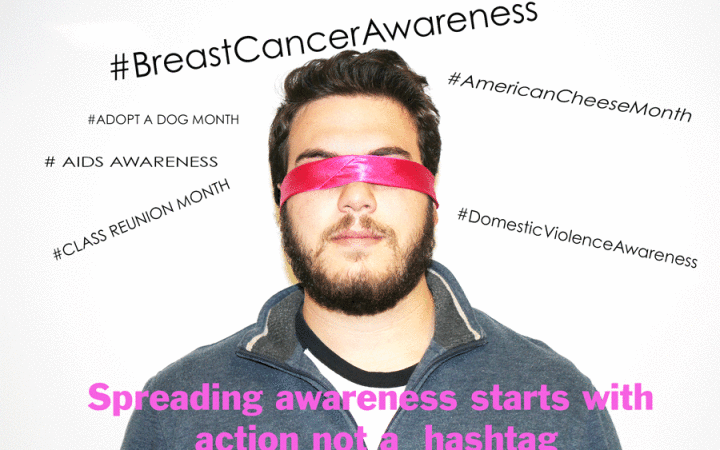As many may already know, October is known as National Breast Cancer Awareness Month. According to nationalbreastcancer.org, Breast Cancer Awareness Month is “an annual campaign to increase awareness of the disease.” Now, initially this may seem like a funny sentence. One might question what awareness there is to raise. Breast cancer is a fairly well-known form of cancer. The difference is that this campaign aims to spread awareness about taking the necessary steps to detect breast cancer and fight it early on.
Interestingly, October is also known for many other monthly observations including: adopt a shelter dog month, American cheese month, AIDS awareness month, class reunion month, caffeine addiction recovery month and celiac disease awareness month, among many others.
Seems like a lot to focus awareness on for one month. The Equinox would like to take a certain position regarding this issue. While we acknowledge the importance and significance of all these issues, we believe it’s tough to really make a difference and do our part to recognize all of these monthly observations.
Our editorial is focusing on breast cancer awareness month. We want to ask this question: How much are we really helping? Are we really doing our part? What could be done better?
“Think before you pink” is a project on breast cancer action. They promote the idea that we need to focus on action instead of awareness. According to their website, the project aims to “stop the distraction of pink ribbon marketing and culture.” Their website goes on to state “Pink ribbon products spread empty awareness.” ‘Awareness’ has failed to address and end the breast cancer epidemic. Who isn’t aware of breast cancer these days? Pink ribbon trinkets on store shelves that promote ‘awareness’ ultimately change nothing. We have more than enough awareness, but not nearly enough action that will make a significant difference to whether women get breast cancer or survive it.”
We’ve all seen pink ribbons floating around on social media, but how often does this actually prompt us to be proactive and do something that will actually make a difference in putting an end to breast cancer? More times than not, we come across a pink ribbon and do nothing more than notice it. This is the type of behavior we believe needs to change.
This is not to say that anyone in particular is a bad person if they don’t find the cure for cancer. We don’t expect miracles out of anyone. We do believe, however, that as a collective society we could be doing more.
There is a common misconception that breast cancer is only found in women. Many don’t realize that a person doesn’t need to have a set a breasts to get breast cancer. What many don’t know is that breast cancer can also be found in men. According to the American Cancer Society, “Breast cancer is a malignant tumor that starts from cells of the breast. A malignant tumor is a group of cancer cells that may grow into (invade) surrounding tissues or spread (metastasize) to distant areas of the body. Breast cancer occurs mainly in women, but men can get it, too. Many people do not realize that men have breast tissue and that they can develop breast cancer.”
It goes without saying that pink is a color often associated with women. It is stereotypically a feminine color. Just think, when you were a baby, what color was your room, your bib, your clothes? More than likely, if you’re a girl, pink was the default color for you. For boys, the default color is typically blue.
With that said, when people see pink ribbons they immediately think “girls.” Or, more specifically, in this case “women.” That is not a fair assessment to make. Yes, more women are diagnosed with breast cancer than men, but just because the statistics show higher rates of women experiencing breast cancer doesn’t mean we should discredit those men fighting the equally tough battle.
By associating the cancer with a specific color, we are placing it in a certain category of masculine or feminine. This is not the case. Both men and women suffer from the cancer and deserve equal representation.
Think before you pink argues that the ribbon isn’t a helpful symbol for those battling breast cancer, instead it acts as a burden to it. “Where once the stated aim of the pink ribbon was to draw attention to women with breast cancer, now the pink ribbon itself is the center of attention and overshadows the women living with, dying from, and at risk of the disease. After twenty years of pink ribbons and awareness campaigns, the pink ribbon is now a distraction, diverting attention away from the critically important work of addressing and ending this breast cancer epidemic.”
While this view may seem a bit extreme, parts of it hold true. The Equinox encourages people to participate in National Breast Cancer Awareness month, but we want to encourage people to go beyond the pink ribbon. After all, what does changing your profile picture on Facebook to a pink ribbon really do for those fighting the battle?

